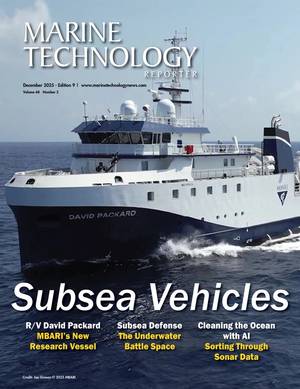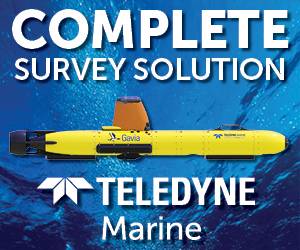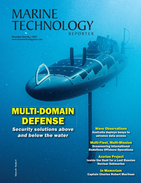Challenges of Underwater Acoustic Communication
Underwater acoustic communication implies sending and receiving sound messages below water. Due to various practical applications in military, commercial, recreational, educational and scientific activities, it is imperative that this field keeps its place in the center of attention of many research companies (especially oil and gas industries, underwater instrumentation companies and fisheries) and public universities. Communication is extremely important in all underwater activities, as it establishes data transfer between two groups/individuals. For each entity using an underwater acoustic communication system, getting the correct and complete data, at the right time (the shortest time possible) is absolutely vital for its pursuit (navigation, monitoring, military activities, defense and so on).
Underwater communication can be wireless or it can use a wire or cable, depending on the type of application it serves. Both of these methods have their pros and cons, and the method preferred depends on the particularities of the environment and the depth at which communication must be established. Wireless communication in preferred when it must take place at depths where wire communication wouldn’t be practical or is impossible.
Despite the intense efforts and significant financial investments into this field, there is still a huge gap between terrestrial and underwater acoustic communication, mainly because undersea communication faces challenges connected to multi-path propagation, small bandwidth, serious signal attenuation over large distances and time variations of the channel. In this context, water itself is the main challenge for underwater communication. The accuracy of underwater acoustic signals depend on the type of water environment (salty water or fresh water), level of impurities, pressure, composition of water and its temperature.
Underwater acoustic communication requires several types of equipment, the most common of which are hydrophone and sonar.
The hydrophone is actually a microphone that can be used undersea. This device features a piezoelectric transducer able to convert sound into electric signals. Hydrophones were first used in the World War I to detect U-boats – German military submarines that targeted British and American merchant convoys. They preceded the sonar in detecting underwater targets and they are still useful nowadays, especially in locating possible oil and gas reserves, listening to underwater creatures and gathering scientific data.
The name sonar is an acronym for Sound Navigation And Ranging and uses the propagation of sound in navigation, acoustic location of vessels and other undersea objects and underwater communication. There are two types of sonar – passive sonar only detect the sound made by other vessels, while active sonar also emit sounds and listen to their echoes. The efficiency of the sonar depends on environmental factors, as well as on the receiving and transmitting equipment.
Applications and challenges of underwater acoustic communication technologies Because of the invaluable aid underwater acoustic communication brings to military and commercial applications, research centers have placed a great focus on developing this technology within recent years. Underwater acoustic networks may include the following applications:
Exchanging information among the nodes within the range of the particular network and even outside that network, using switch centers or gateways. Underwater communication networks are, obviously, created for the purpose of facilitating undersea communication, therefore sending and receiving pieces of information among these nodes is one of the most important applications of UANs. Undersea communications via Internet is also one of the primary goals of scientists in research centers, as this type of communication does not imply any sort of tether and could also provide real-time communication with the targeted underwater manned or unmanned vehicles.
Monitoring the environment is also a priority, as pollution of the ocean waters has increased in both quantity and frequency of occurrence. Underwater acoustic networks can also be useful in monitoring the level of pollution, detecting nuclear, biological, or chemical leakage in all sorts of water environments – lakes, bays or rivers. UANs can also survey and estimate the impact of global warming on oceans.
Subsea exploration is still rather difficult for humans, because of the inhospitable conditions in oceans – high pressure of air and water combined, unpredictable events, and unknown subsea areas. Underwater acoustic networks have applications in exploring the unknown regions in the ocean and detecting deposits of minerals and oil areas.
UANs are also used in warfare, mainly in detecting hidden mines with the aid of acoustic and optical sensors. Developments in underwater communication are still ongoing, for instance – the effect on vector hydrophones on accuracy, reverberation analysis, the performance of scanning sonar looking for undersea objects, backscattering measurement and so on.
Commercial parametric sonar is used mainly in analyzing ocean floor scattering, but also in applications involving imaging of the ocean floor and detection of buried objects, such as hidden mines. In the following, we present some of the major challenges underwater communications networks face nowadays: Underwater acoustic communication networks have many commercial and academic applications, yet they suffer a major downside – acoustic modems are still extremely expensive.
Acoustic modems have three main components: an analog front end, which is a transducer, a pre-amp and an amplifier for underwater communication; a piece of hardware that can be either a microcontroller, a DSP – digital signal processor, or a FPGA – a field programmable gate array; and various interfaces to oceanographic sensors. Among these three, the first one, the transducer, poses the greatest challenges in terms of costs. Commercial transducers are rather expensive mainly because of the low demand on the market, thus creating low-cost transducers could solve the cost challenges for underwater acoustic networks.
Underwater acoustic communication networks are also vulnerable to malicious attacks because of the high bit error rates, propagation delay and low bandwidths. Because the acoustic communication channels are uniquely designed and different from the communications networks used on land, they require more sophisticated security mechanisms.
When it comes to energy saving, this is also a main issue to underwater communication systems. The main idea is to build them in such as manner as to keep them underwater for as long as possible, due to the high cost of re-deploying subsea equipments. It is vital to save energy so the technology can run for a longer period undersea, and this must be taken into consideration in the design of protocols.












 December 2025
December 2025



